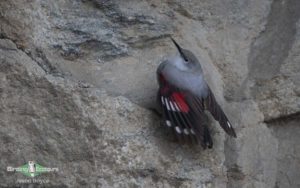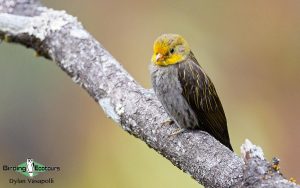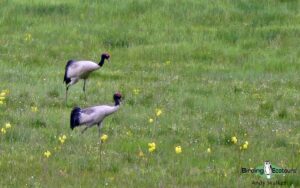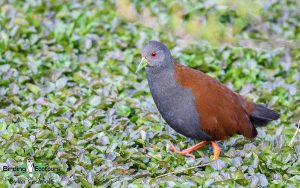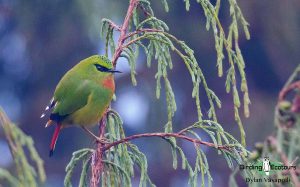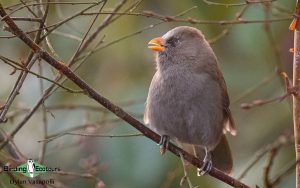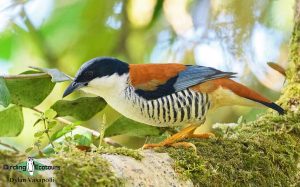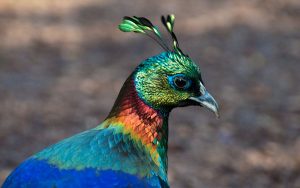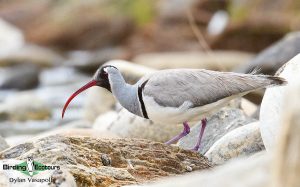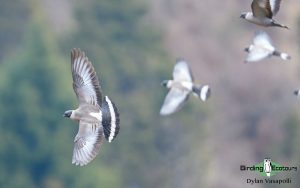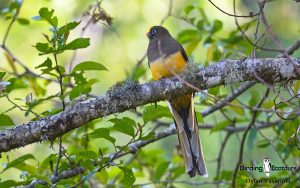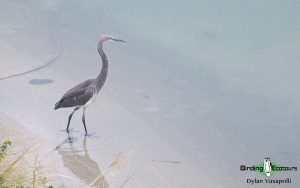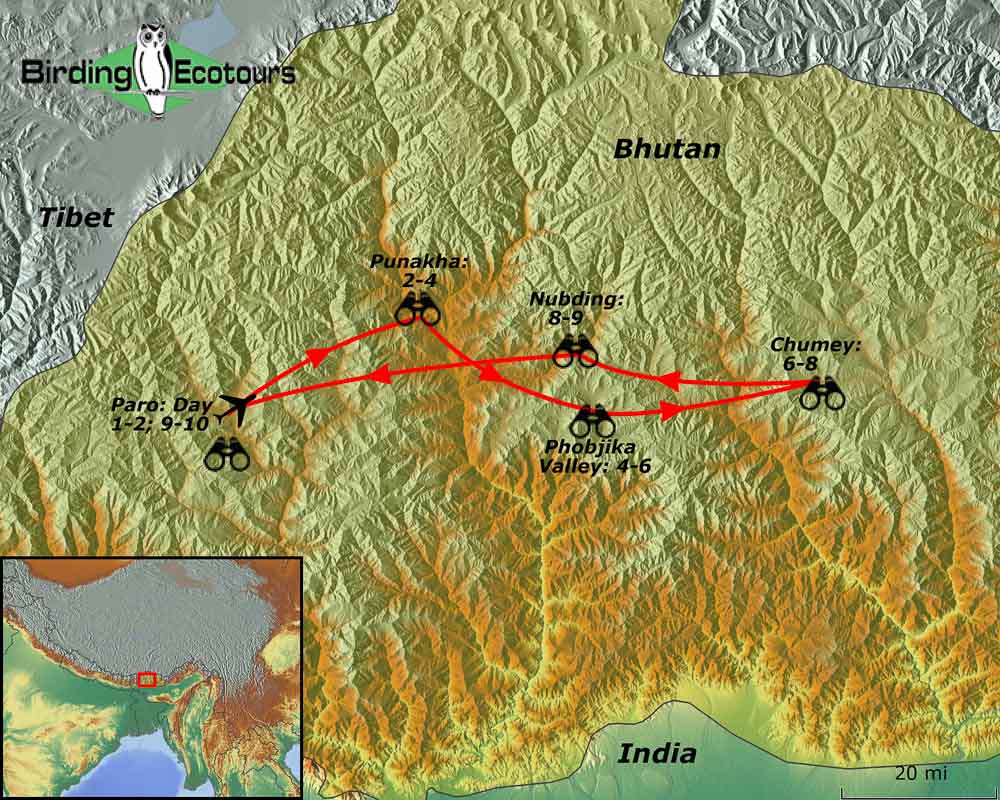Birding Tour Bhutan: Bhutan in Fall
Go to: Bhutan Birding Tours | Birding Tours in Asia | All our birding tours
Bhutan In Fall: Monals, Cranes and Mountains
November 2025/2026
The Kingdom of Bhutan, known as “the Kingdom in the Clouds” and “the Land of the Thunder Dragon”, is a quaint, quiet, and scenically spectacular country with a strong conservation ethic rooted in ancient Buddhist traditions. Furthermore, the people are extremely friendly, there are many environmental protection laws, and the air and water are clean and refreshing. There is nothing quite like experiencing Bhutan firsthand, and we look forward to welcoming you onto this short fall/autumn tour.
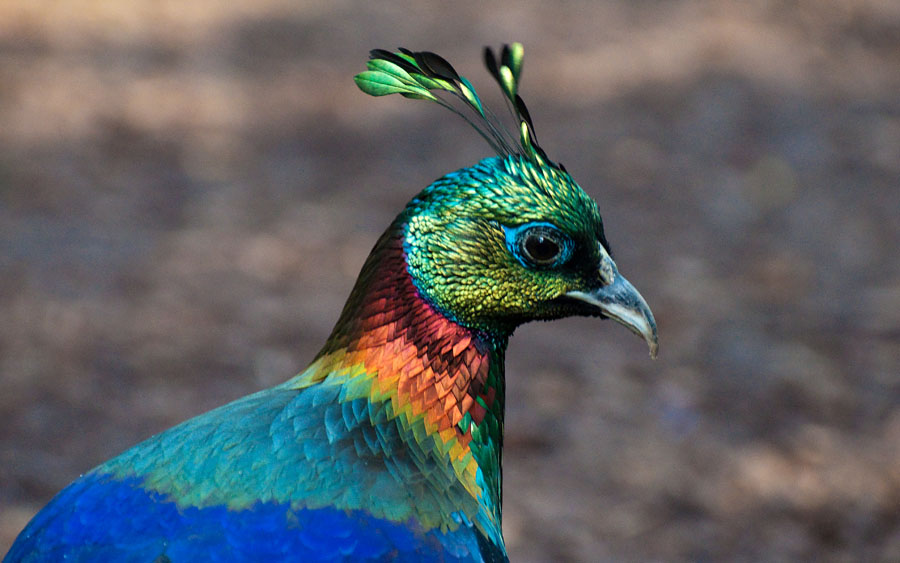
Swathes of unspoiled forest still cloak the Himalayan foothills that cover much of Bhutan. On clear autumn days we can enjoy breathtaking vistas of snow-capped peaks and astonishing architecture while searching for a suite of sought-after birds. November is a particularly good month for birds that are often missed on spring birding tours to this country – notably Black-necked Crane and the Critically Endangered (IUCN) White-bellied Heron – an enigmatic denizen of pristine mountain streams. Additionally, dazzling Himalayan Monals gather to feed in suitable areas, putting on the most spectacular of shows! We begin our tour with our arrival in Paro in the west. We’ll then gradually make our way eastward through a range of habitats, including pine and spruce forests, bamboo, alpine scrub and valleys with fast-flowing rivers, to name but a few, before concluding the tour back in Paro, where we started.
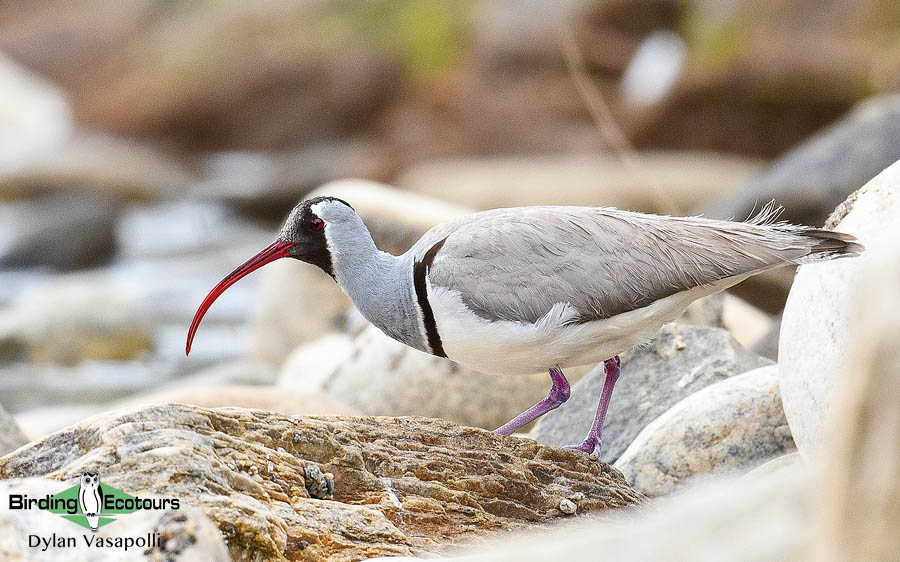
Birding Bhutan in November also means being treated to abundant and fabulously exciting mixed flocks that contain the likes of laughingthrushes, yuhinas, fulvettas, and other incredible Oriental bird groups. Additionally, we expect to find several fabled Eastern Himalayan birds that can be encountered year-round, such as the gorgeous Ward’s Trogon, the petite Fire-tailed Myzornis, the scarce Yellow-rumped Honeyguide, and vivid pheasants, including the aptly named Blood Pheasant. There is also a chance to see the striking Satyr Tragopan. Note, however, that these species are typically easier to see on our spring Bhutan Tour (where you may also see other sought-after specials, like Beautiful Nuthatch and Rufous-necked Hornbill). Other highlights of this fall/autumn tour include a trio of monotypic specials in Ibisbill, Wallcreeper, and Spotted Elachura, along with spectacular sunbirds, parrotbills, and striking and gorgeous forktails along the fast-flowing rivers – plus a plethora of other tantalizing jewels. As if the avian delights on this tour weren’t enough, beautifully crafted dzongs (the word means “fortress”, but these days they serve primarily as monasteries) and temples, such as the famous Tiger’s Nest Monastery, dot the awe-inspiring landscapes.
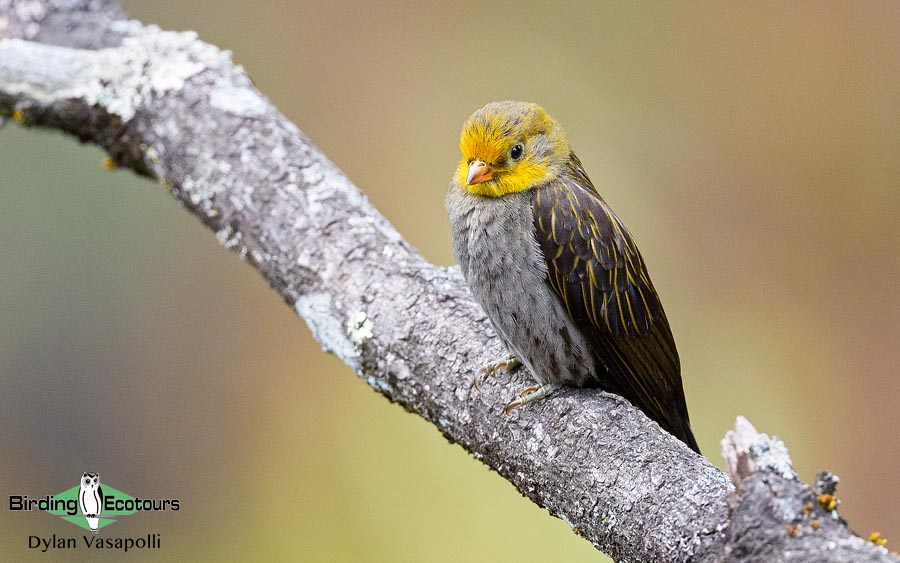
Itinerary (10 days/9 nights)
Day 1. Arrival in Paro
Our flight arrives at the spectacular Paro International Airport, walled in by the impressive Himalayan foothills. Here we will not only be introduced to Bhutan’s fascinating and unusual architecture, but we will also immediately start our exciting Himalayan birding. Ibisbill lurks along the banks of the river adjacent to the airport, while Wallcreeper, Black–tailed Crake, and Solitary Snipe can all be seen nearby. While exploring, we should also find other notable specials, including Red-billed Chough, Brown Dipper and White-capped Redstart.
Overnight: Paro
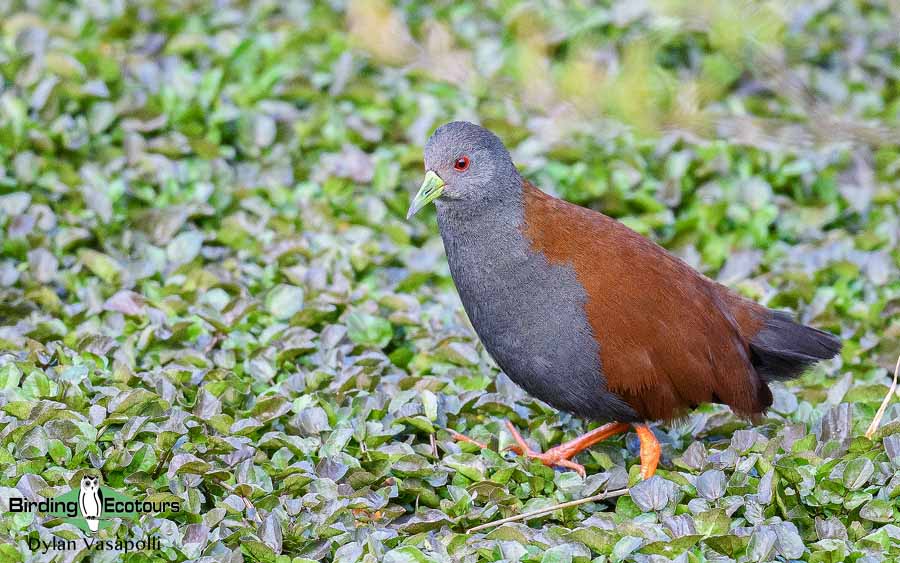
Day 2. Birding Dochula Pass and the Lamperi Royal Botanical Park
Today we head east to the Dochula Pass, which in autumn typically provides breathtaking views of Bhutan’s seven highest Himalayan peaks. The birding here, and in the forests below, is equally impressive, and we will search for the long-tailed Yellow-billed Blue Magpie and the vividly colored trio of Whistler’s Warbler, Grey-hooded Warbler, and Chestnut-crowned Warbler. With luck, we may see Fire-tailed Myzornis here, and we are likely to get our first encounters with typical Asian bird families such as yuhinas and fulvettas. Black-faced and White-throated Laughingthrushes are common and tame here, and are occasionally joined by the massive Spotted Laughingthrush.
The recently declared Lamperi Royal Botanical Park is our next stop as we descend towards Punakha. The birding here is superb, with a constant stream of activity, and it can be hard to decide where to look! The enigmatic Brown Parrotbill and the striking Grey-sided Laughingthrush can occasionally be found here. Rufous-bellied Woodpecker and Great Barbet are usually more conspicuous, and we hope to encounter our first winter feeding flocks, which might hold the likes of Chestnut-crowned Laughingthrush, Scaly-breasted Cupwing, Chestnut-capped Babbler, Black-throated Bushtit, both Whiskered and Striated Yuhinas and Rufous-breasted Accentor. Warblers are well represented here and will undoubtedly put our identification skills to the test.
After what promises to be an exhilarating day, we will descend into the Punakha Valley, our base for the next two nights.
Overnight: Punakha
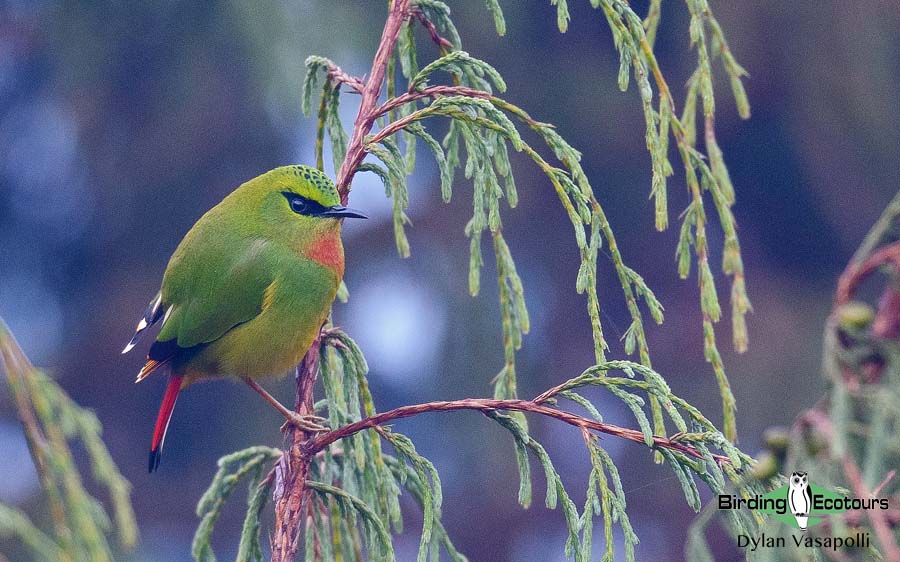
Day 3. White-bellied Heron and the forests of the Mo Chhu River
We have a full day to spend birding around Punakha, and we will start by looking for White-bellied Heron. This species was historically widespread through the foothills of the eastern Himalayas, but sadly has declined dramatically and now has a world population of perhaps only 250 birds. Bhutan is arguably the best country to search for this difficult species, and it will be a major target during our time here, as several birds often frequent the river running through the Punakha Valley. While searching for the heron, we’re likely to see a variety of other waterbirds, including Ruddy Shelduck, Common Merganser, Crested Kingfisher and the endangered (IUCN) Pallas’s Fish Eagle.
We will also dedicate time to exploring and birding the magnificent forests along the Mo Chhu River. Here we will once again experience the Himalayan birding spectacle at its best with species such as the diminutive yet spectacular Chestnut-headed Tesia, the brightly colored Scarlet Minivet (along with the similar Short-billed and Long-tailed Minivets), Golden-throated Barbet, and with luck and much patience, Spotted Elachura. The elachura, previously known as the Spotted Wren-Babbler, was recently moved into a family of its own, making it a monotypic family (the only member of its family). Pristine boulder-strewn stream crossings in the area are home to the elegant Slaty-backed and Spotted Forktails. While stalking birds in the forests, we will keep an eye skywards for Mountain Hawk-Eagle, Crested Serpent Eagle, and flocks of Himalayan Swiftlets.
After this birding spectacle, we will visit the legendary Punakha Dzong – Bhutan’s most impressive dzong and currently in use as a monastery. The dzong is situated at the confluence of the Mo Chhu and Po Chhu Rivers and has been subject to many attacks, floods, fires, and earthquakes since it was built in the 1600s. The beauty and tranquility of this edifice is awe-inspiring.
Overnight: Punakha
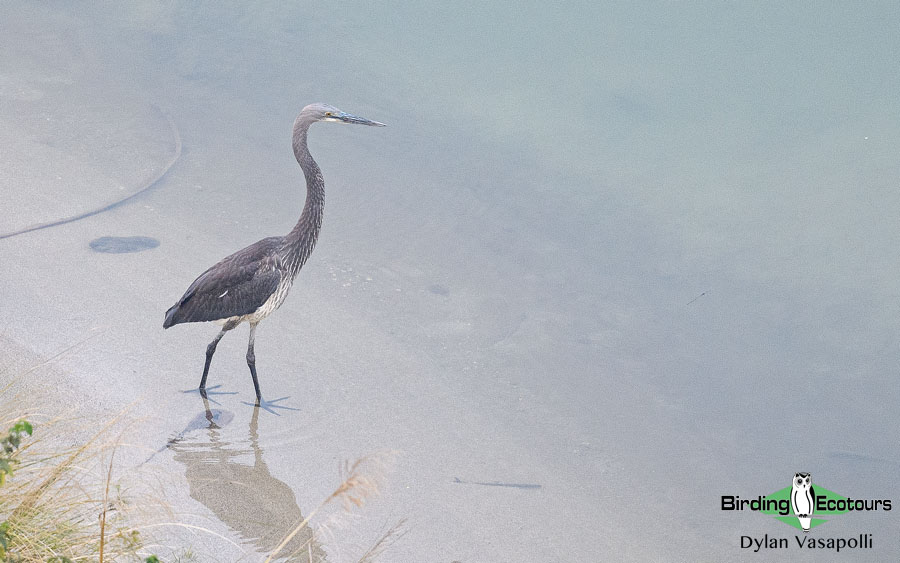
Day 4. Birding Nubding forests en route to Phobjikha
We have a final chance at seeing the rare White-bellied Heron this morning, should we have missed it the previous day. Careful birding in the Punakha Valley will likely yield further exciting, though widespread species, such as Grey Treepie, Rusty-cheeked Scimitar Babbler and White-throated Kingfisher.
As we say goodbye to the Punakha Valley, we ascend towards Nubding, where we will spend some time birding in the mature moss-clad broad-leafed forests. This area is a reliable site for two highly desired forest species; Ward’s Trogon and Himalayan Cutia. As we set about looking for these species, we quickly become familiar with the exceedingly common Rufous Sibia, along with small lively parties of Rufous-winged Fulvettas. At the same time, colorful minivets flash past, and Chestnut-bellied Rock Thrushes often sit motionless in the trees. Rock bee colonies can be found on some of the cliffs here, and scrutiny of these bee colonies is sometimes rewarded with views of Yellow-rumped Honeyguide – a species inextricably linked to these bees. Some of the scrubbier vegetation on the forest edges support the range-restricted Bhutan Laughingthrush and the bright Verditer Flycatcher – a common and much-loved companion.
We will make our way up to the top of the Pele La Pass, where we will bird tomorrow, before descending into the nearby Phobjika Valley. A special visit to this valley is required to see one of the rarest cranes in the world, Black-necked Crane. This species overwinters in the farmed fields of the valley, and often allow for close approach!
Overnight: Phobjika Valley
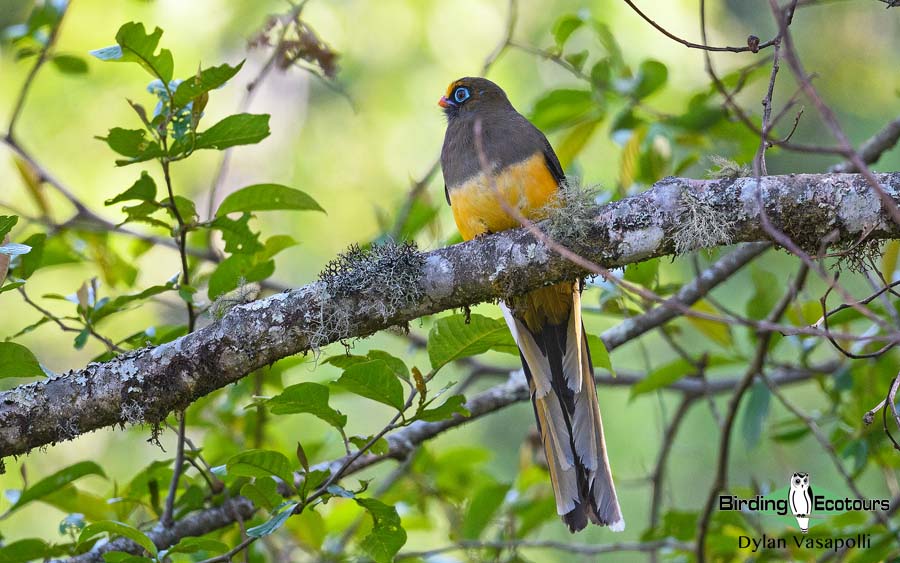
Day 5. Pele La Pass, Nubding and Phobjika birding
We have a full day at our disposal to bird this region. High on our agenda today will be the mighty Pele La Pass, which we ascended yesterday, and is home to some of Bhutan’s mega birds. We will explore the alpine reaches of the pass along with both the rhododendron-clad sections and those blanketed in coniferous woods. The remarkable Satyr Tragopan is arguably the most exciting species occurring here, but it is exceptionally unobtrusive in the non-breeding season and thus hard to find. Luck will need to be on our side to get a sighting of this species on our November tour. The aptly named Fire-tailed Myzornis may be smaller, but it is no less spectacular, and we will keep our eyes peeled for it, along with the likes of Fire-tailed Sunbird and the shy White-browed Bush Robin. Species such as Spotted Nutcracker, Rufous-vented Tit, Bar-throated Minla, White-collared Blackbird and Blue-fronted Redstart are all common. Himalayan Vulture is a regular sight overhead, and even Bearded Vulture puts in an occasional appearance.
The nearby Nubding forests can again be explored for tricky species like Ward’s Trogon and Himalayan Cutia, and bamboo groves can be searched for the uncommon Great and Brown Parrotbills. Additionally, we will also be sure to soak in further views of the rare Black-necked Crane before calling it a day.
Overnight: Phobjikha Valley
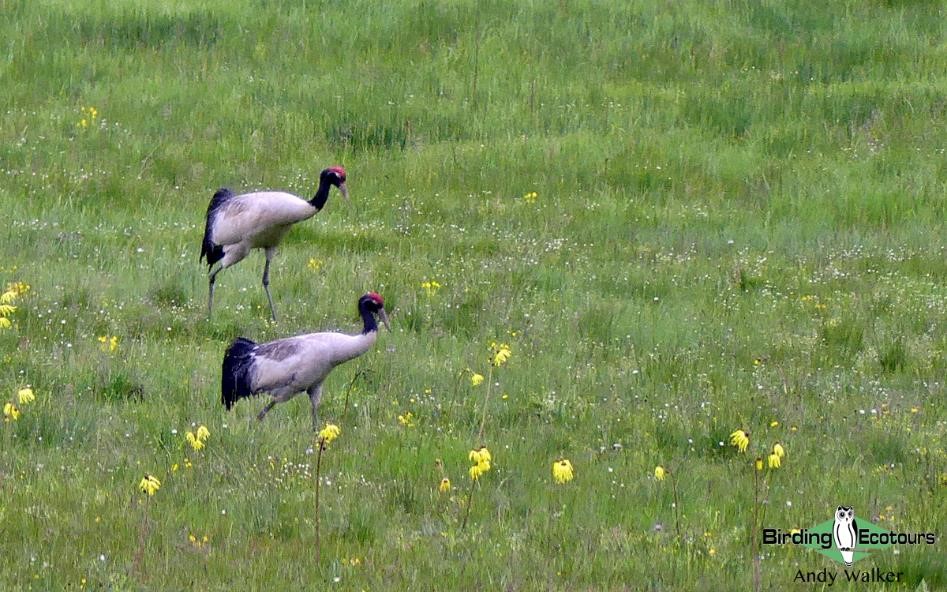
Day 6. Birding the alpine heights of Yotong La Pass
After soaking up our final views of Black-necked Cranes, we make the trek towards Trongsa, searching any of the bamboo stretches along the way for Brown and Great Parrotbills, if still required. Nepal House Martins are often seen along the cliffs in this area.
From Trongsa, we journey onto the famous (in birding terms) Yotong La Pass. As with Pele La, this pass ventures into the alpine zone, allowing us to see some of these spectacular birds again. Satyr Tragopan occurs here but is unlikely to be encountered as we only get to the pass much later in the day. Flocks up here are often heralded by Stripe-throated Yuhina and White-throated Laughingthrush, and if we pay special attention, we stand a good chance of picking up the mega Fire-tailed Myzornis and Fire-tailed Sunbird. While watching the flocks, we’re also likely to see more common species such as Yellow-bellied Fantail, Rufous-fronted Bushtit, White-browed Fulvetta, Rufous-vented Yuhina, Chestnut-crowned Laughingthrush, Red-tailed Minla, White-winged Grosbeak and Mrs. Gould’s Sunbird.
We will descend into the Bumthang Valley in the late afternoon, where we will base ourselves for the next two nights.
Overnight: Chumey
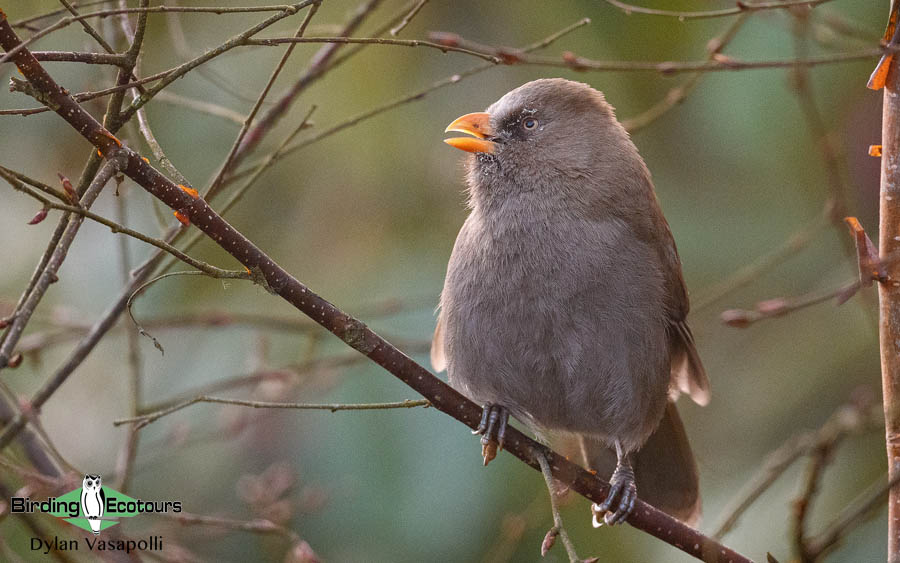
Day 7. The Himalayan Monals of Tharpaling Monastery
Although Black-rumped Magpie is restricted to the Bumthang Valley and should be easily seen in the area, our main purpose for visiting this region is to see the glamourous Himalayan Monals. The monals frequent the hills around the Tharpaling Monastery – an impressive temple constructed in the 12th century that looms high over the valley. The birds occur widely up here, and the brightly colored males can be seen on the steep rocky cliffs, in the pine woods and on the open flats where they come out to forage. We will spend some time exploring these areas and stand a very good chance of seeing this iconic Himalayan bird.
Snow Pigeons often adorn the monastery roof and nearby cliffs, while the pinewoods can hold the likes of Red-headed Bullfinch, Red Crossbill and Himalayan White-browed Rosefinch. We’re also likely to come across Blood Pheasant whilst birding up here. We will visit this area both in the morning and afternoon to ensure we succeed in our quest.
Overnight: Chumey
Day 8. Birding Yotong La Pass
After having thoroughly reveled in the incredible Himalayan Monals, we will start retracing our steps back to Paro, and today we will return to the familiar Nubding area. We should be able to spend the bulk of our morning exploring the birdy Yotong La Pass once more. Despite being a tricky species at this time of the year, we will be birding the pass at a more suitable time today and will try hard for the regal Satyr Tragopan. Darjeeling Woodpeckers drum from the trees, and Dark-sided Flycatchers perch conspicuously on the tree tops. The mournful calls of Hill Partridges ring out from seemingly everywhere, and we will try to lure one out into the open, but we may have more luck in seeing Kalij Pheasants.
Overnight: Nubding
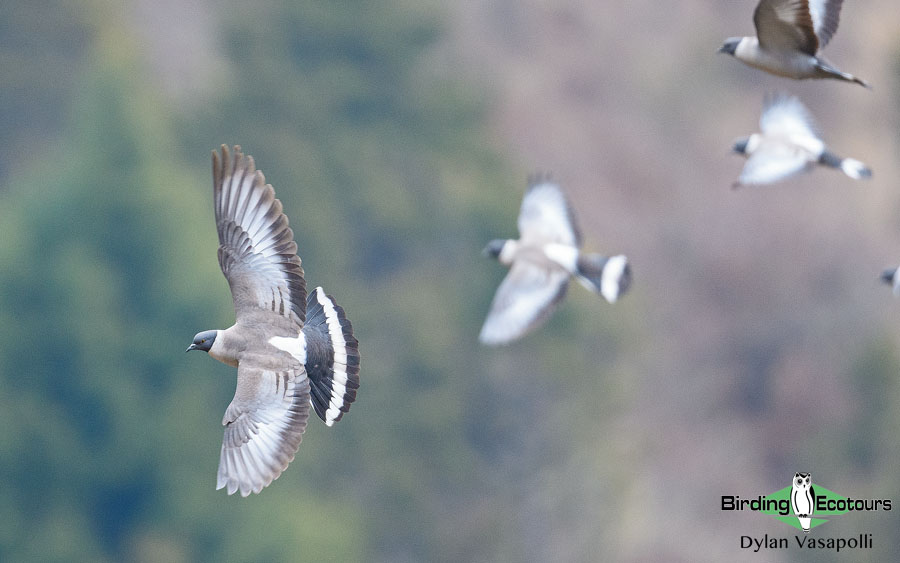
Day 9. Birding back to Paro
We complete the journey back to Paro today, with multiple birding stops along the way. We can spend one final morning enjoying alpine birds like Fire-tailed Myzornis on the Pele La Pass, before looking for our last Ward’s Trogon and Himalayan Cutia in the moss-clad Nubding forests. If we’re lucky, we’ll get our final views of the rare White-bellied Heron in the Punakha Valley. Once back in Paro, our final Ibisbill will help us wind down and settle in for one last dinner together.
Overnight: Paro
Day 10. Departure
Today is earmarked specifically for your departure, and you are welcome to depart at your leisure; no birding is included.
For those seeking to supplement their bird quota, you can continue on our specially designed Birding Tour Assam, India: Kaziranga and Nameri National Parks extension, which leaves from Guwahati, Assam, at lunchtime.
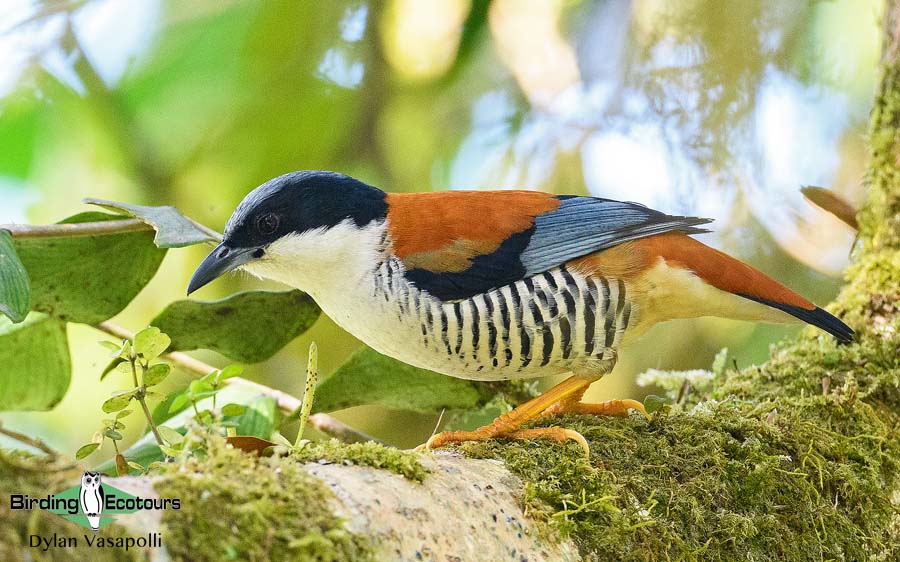
Please note that the itinerary cannot be guaranteed as it is only a rough guide and can be changed (usually slightly) due to factors such as availability of accommodation, updated information on the state of accommodation, roads, or birding sites, the discretion of the guides and other factors. In addition, we sometimes must use a different international guide from the one advertised due to tour scheduling.
Download Itinerary